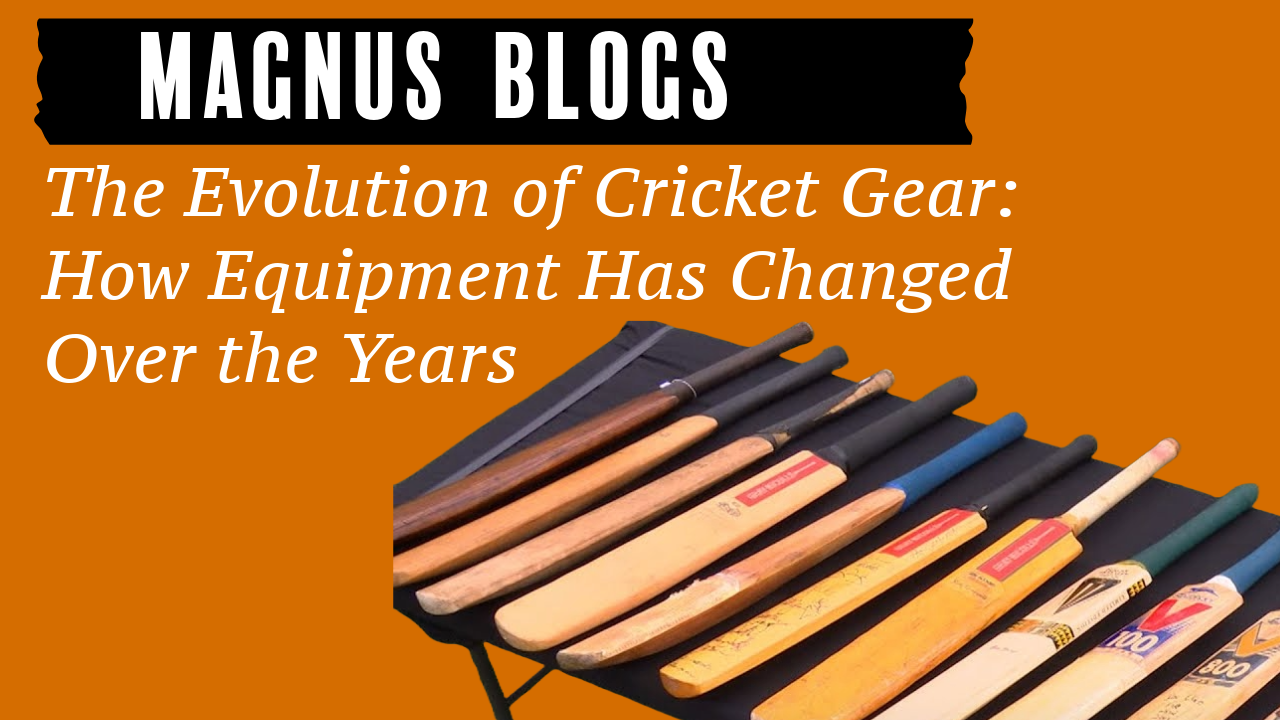Cricket has evolved significantly over the centuries, and so has the gear used by players. From rudimentary wooden bats to advanced protective gear, the transformation of cricket equipment has played a crucial role in shaping the modern game. In this blog, we explore the fascinating journey of cricket gear evolution and how technology has improved safety, performance, and style.
1. The Evolution of Cricket Bats
In the early days of cricket, bats resembled hockey sticks, with a curved design that made striking the ball more challenging. Over time, they evolved into the flat-blade shape seen today. Key advancements include:
-
18th Century: Thick, heavy willow bats with no standardized size.
-
19th Century: Introduction of the straight blade and better weight distribution.
-
20th & 21st Century: Lightweight bats made from English willow with advanced engineering for power hitting.
2. Cricket Balls: From Handmade to Machine-Crafted
The cricket ball has remained largely unchanged in material but has seen refinements in construction for durability and performance. Key developments include:
-
Early days: Hand-stitched balls made of cork and leather.
-
19th Century: Standardization of ball weight and size.
-
Modern Era: High-quality leather balls designed for different formats (Test, ODI, and T20).
3. Protective Gear: Enhancing Player Safety
Originally, cricket was played without protective gear, but with the increasing pace of the game, safety equipment became essential. Major milestones include:
-
Pads & Gloves: First introduced in the 19th century to protect batters.
-
Helmets: Became common in the 1970s after growing concerns about head injuries.
-
Arm Guards, Chest Guards, and Thigh Pads: Developed to safeguard players against fast deliveries.
4. Evolution of Cricket Footwear
Cricket shoes have transformed from basic leather soles to technologically advanced footwear designed for grip and comfort. Key advancements:
-
Spiked Shoes: Introduced to provide better traction on grass.
-
Lightweight Materials: Modern shoes are designed for agility and speed.
-
Customization: Shoes now cater to different playing surfaces and player preferences.
5. Wicket-Keeping Gear: Improved Comfort & Protection
Wicket-keepers originally played without gloves, but as bowling speeds increased, specialized gear became necessary. Innovations include:
-
Padded gloves with webbing for improved catching.
-
Wicket-keeping pads for additional protection.
-
Inner gloves for enhanced grip and comfort.
6. Modern Technology & Smart Cricket Gear
With advancements in technology, cricket gear has gone high-tech. Recent innovations include:
-
Sensor-embedded bats to analyze shot performance.
-
Smart helmets with impact resistance and better ventilation.
-
High-performance fabrics in cricket clothing for moisture-wicking and temperature control.
The evolution of cricket gear reflects the game’s continuous innovation and adaptation to modern demands. From traditional wooden bats to high-tech safety gear, these advancements have enhanced player safety, comfort, and performance. As technology continues to progress, we can expect even more groundbreaking changes in the future of cricket equipment.
